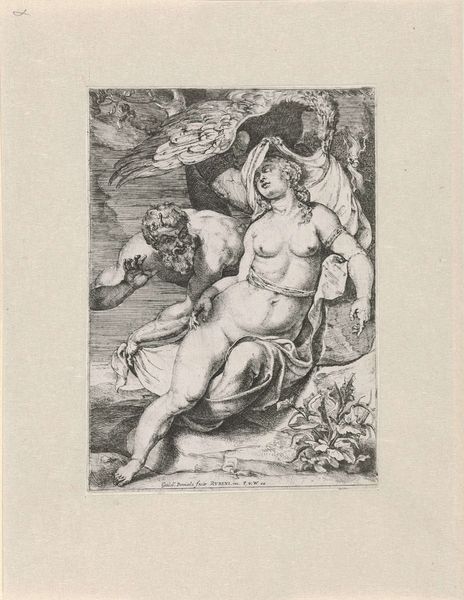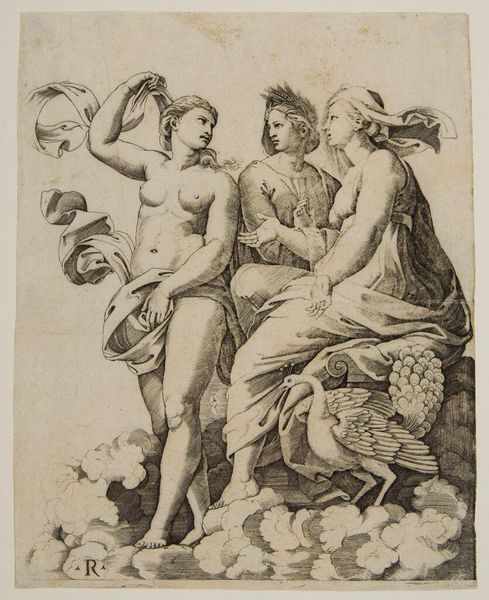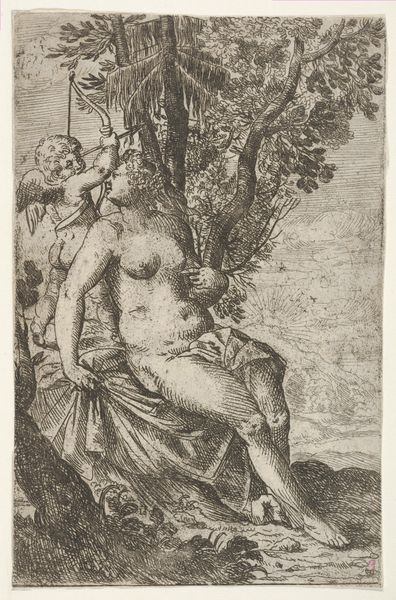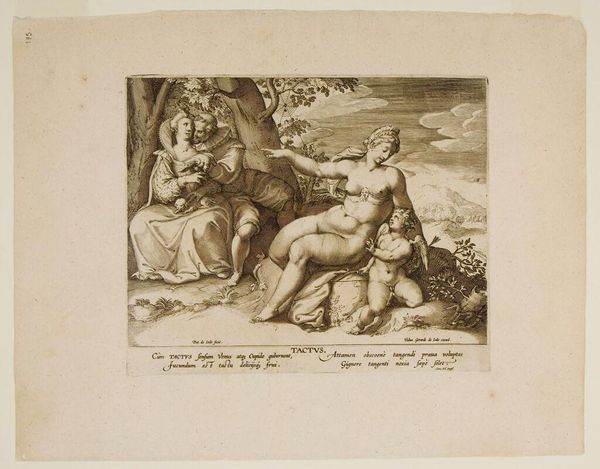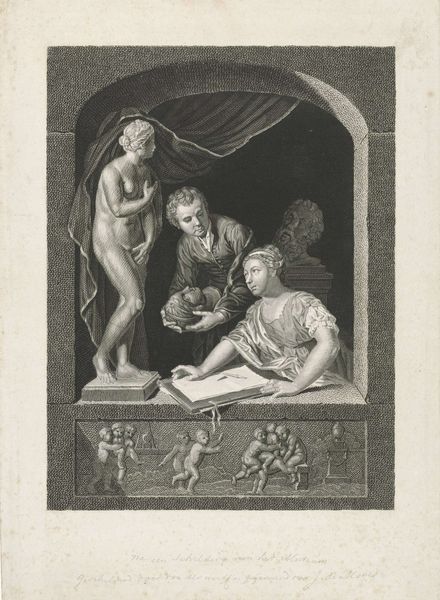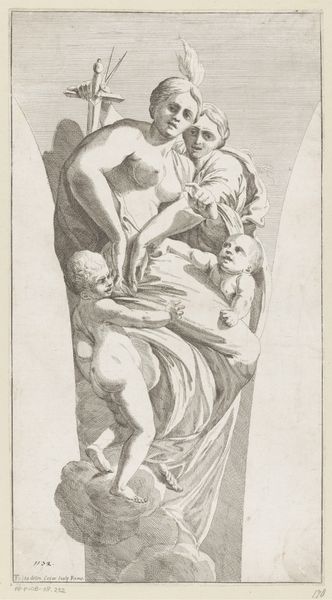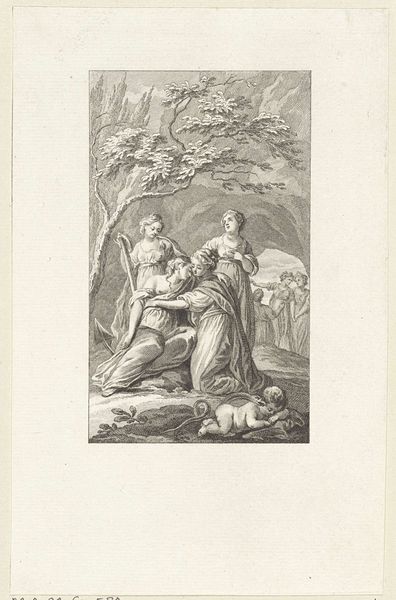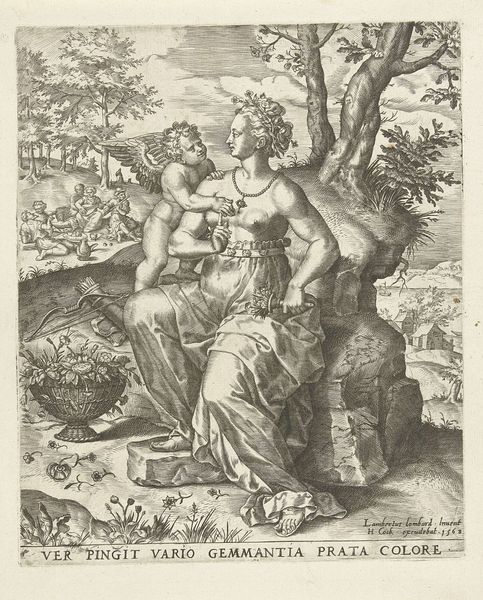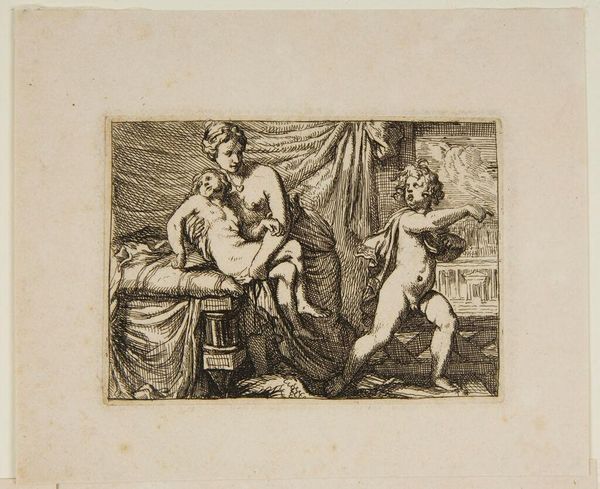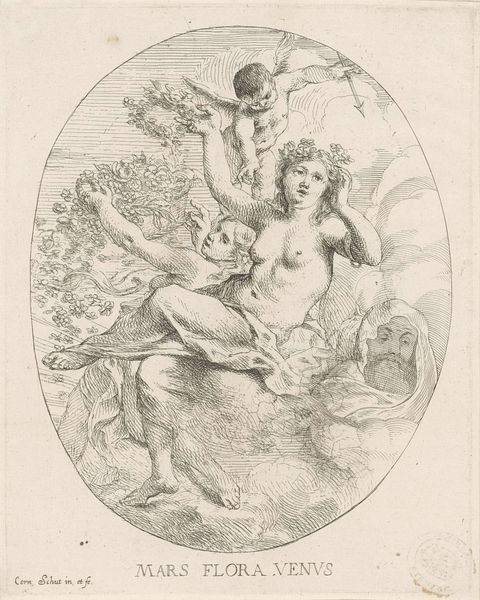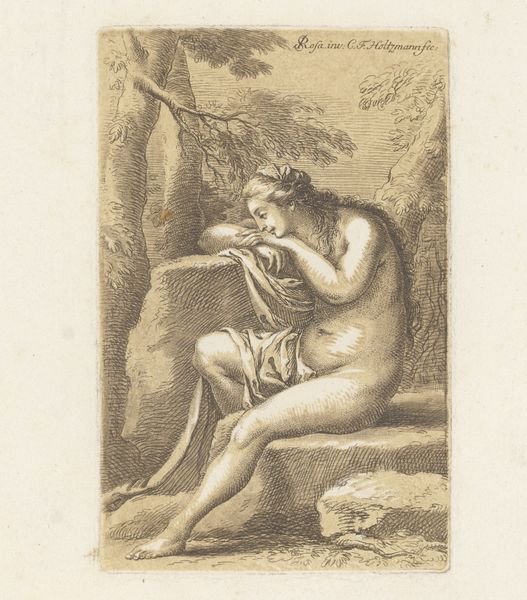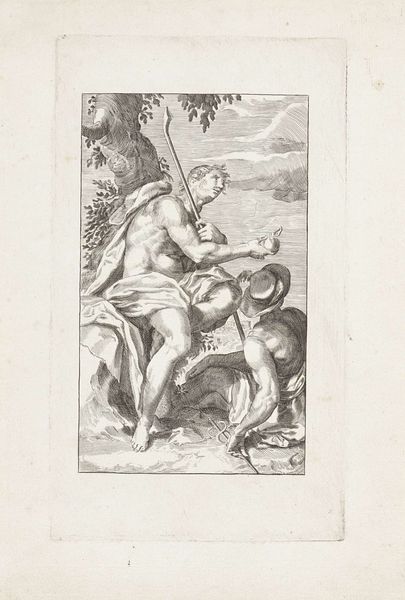
print, engraving
#
portrait
#
allegory
#
baroque
# print
#
figuration
#
line
#
history-painting
#
nude
#
engraving
Dimensions: height 141 mm, width 86 mm
Copyright: Rijks Museum: Open Domain
Editor: This engraving, "Bas-relief with David and Bathsheba" by Matthijs Pool, created around 1727, is incredibly detailed. It almost feels sculptural despite being a print. The stark contrast and fine lines create a compelling scene. How do you interpret the composition, with its focus on form and balance? Curator: The piece leverages Baroque sensibilities in its use of line, creating dynamism within a static medium. Note the deliberate arrangement of figures—Bathsheba at the center, flanked by attendants and watched from afar. What is your read of how Pool utilized line to shape form? Editor: I think the lines create a clear distinction between the figures. The lines create a texture that almost feels like folds of fabric. It directs your eye toward the central figure and what looks like David watching from above. What's most important here, the depiction of an allegorical event or the quality of the engraved lines? Curator: That contrast draws us in, doesn't it? In this piece, the success lies in how the lines articulate the subject matter. Observe how the hatching technique around Bathsheba contrasts with the smoother treatment elsewhere, guiding the eye and creating depth. Is the emotional depth of this print successfully conveyed by its formal structure? Editor: Perhaps not emotional depth so much as narrative clarity. I see now how the stark lines emphasize the power dynamic, even from a distance. I hadn't thought of it like that. Curator: Precisely. The artist used line strategically to build up form.
Comments
No comments
Be the first to comment and join the conversation on the ultimate creative platform.
